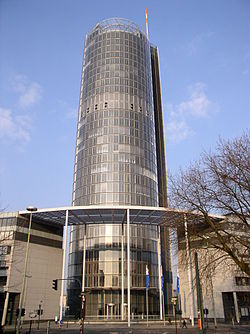This article needs additional citations for verification .(September 2009) |
| Biblis Nuclear Power Plant | |
|---|---|
 Unit A, seen from South-West with two cooling towers | |
 | |
| Country | Germany |
| Location | Biblis |
| Coordinates | 49°42′36″N8°24′55″E / 49.71000°N 8.41528°E |
| Status | Closed since 18 March 2011 |
| Construction began | 1969 |
| Commission date | 25 August 1974 |
| Decommission date |
|
| Operator | RWE |
| Nuclear power station | |
| Reactor type | PWR |
| Reactor supplier | Siemens |
| Cooling towers | 4 |
| Cooling source | Rhine River |
| Power generation | |
| Make and model | Siemens |
| Units decommissioned | 1 x 1,255 MW 1 x 1,300 MW |
| Nameplate capacity | 2,525 MW |
| Capacity factor | 69.2% |
| Annual net output | 15,306 GW·h |
| External links | |
| Website | Site c/o RWE |
| Commons | Related media on Commons |
The Biblis Nuclear Power Plant is a nuclear power plant in the German municipality of Biblis that consists of two units: unit A with a gross output of 1200 megawatts and unit B with a gross output of 1300 megawatts. Both units are pressurized water reactors. The operator of this power plant is the German RWE Power AG, an electrical utility based in Essen. Unit A began operation on 16 July 1974, and entered commercial service on 25 August 1974; unit B reached criticality on 25 March 1976[ citation needed ]. Both units now are shut down indefinitely for political reasons (Atomausstieg).
Contents
Biblis is the partner power station of the Balakovo Nuclear Power Plant [ citation needed ].






